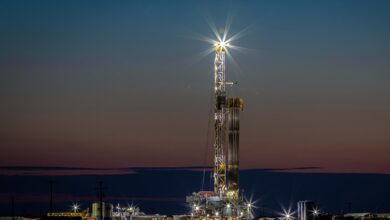OSRL containment system to be response-ready by end of 2014
By Astrid Wynne, contributing editor

Industry cooperative Oil Spill Response Ltd (OSRL) announced in September an effort to develop a subsea containment system to supplement its capping stack, dispersant and debris-clearing toolboxes.
The new toolkit, which will include guidelines for subsea containment, is being put together with the Subsea Well Response Project (SWRP). To be response-ready by the end of 2014, it will combine existing industry technology with a new flow spool design. “The concept is that, if there is a well incident, then the capping stack will be deployed first to try and stop the hydrocarbon flow. On the very, very rare occasion that the capping stack would not work, then the containment system would be deployed to direct hydrocarbons to the vessel on the surface. It’s a contingency of a contingency, if you like,” containment project manager Ho Yew Weng said.
The 18-month containment project began in June. The concept relies on existing drilling rigs and commercially available well-testing equipment to capture fluids from an incident well and flow them to the surface for processing and disposal. If well shut-in is not possible, the subsea well containment toolkit can be deployed to flow hydrocarbons from the capping stack to an offloading tanker.
Mr Ho explained that although some parts of the system are already used in the industry, lead times can run over a year. By ordering everything now and having them readily available, the toolkit will help to minimize response times for operators in case of an incident. Components will be stored either at manufacturer bases in Scotland, the US and Norway or at OSRL response center locations in Singapore, the UK and Brazil.
“Flexible jumpers and flowlines will be distributed (to OSRL response centers around the world). Items such as coolers, which require maintenance on the part of the manufacturer, are stored with them. The rest of the items will be stockpiled, and are all air-transportable. OSRL’s responsibility will be to get this kit together and get it to a point, the quayside, where the incident owner will take over,” Mr Ho said.
The new flow spool was developed by SWRP and manufactured by Houston’s Trendsetter Engineering; a patent application has been submitted. “It’s basically a big piece of forging designed to withstand great pressure. It diverts the direction of the hydrocarbons so that they can be transported up to the surface,” he explained. The kit is expected to be response-ready by end of 2014, with first delivery of components due in Q3 2014.
Besides work on the containment system, OSRL also continues to run regular preparedness drills in conjunction with stakeholders – those who are likely to be part of the response team during an incident. When the containment system becomes ready, testing and drills are expected as well. Part of the containment package will be guidelines on how to put the kit together, which will be incorporated into the due diligence of asset operators.
Training and workshops for OSRL subscribers will be drawn up next year closer to the equipment delivery date.




